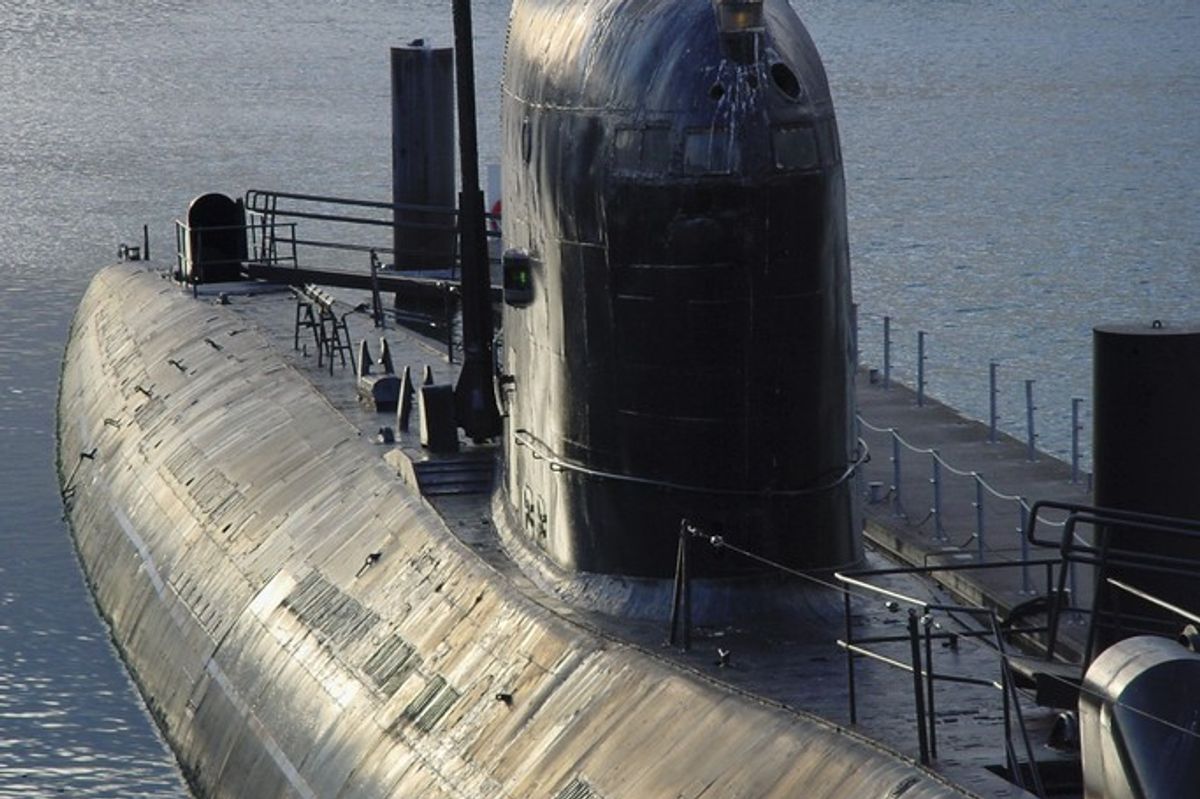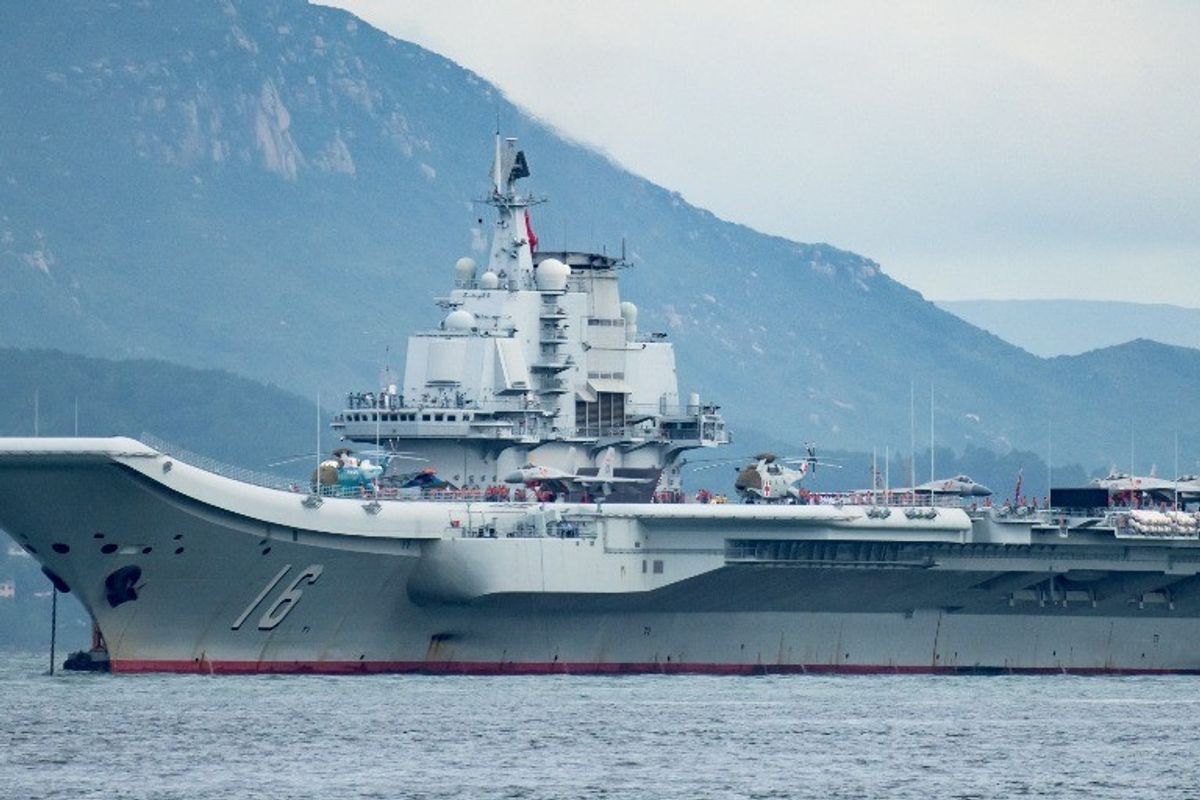For more than a decade, Asian countries have been on a submarine spending spree. Some countries are updating obsolete vessels while others are purchasing submarines for the first time. This trend has largely been driven by growing concerns nations have over maintaining a deterrent against an increasingly assertive China broadly, but also rivalries with neighbors and a desire to maintain technological parity with rivals. The Cipher Brief spoke to Collin Koh Swee Lean, a research fellow at the Institute of Strategic Defence Studies in Singapore, to learn more about the effect these submarine purchases may have on conflict escalation and the new technologies employed by these submarines.
The Cipher Brief: What geopolitical dynamics are driving Asian countries to procure more submarines?
Collin Koh Swee Lean: It’s first important to note that the geopolitical dynamics that drive submarine procurements differ from one particular subregion to another within broader Asia. For example, within the South Asian subregion the geopolitical dynamics underpinning submarine acquisition would revolve around the Indo-Pakistani rivalry. Both countries view each other as longstanding adversaries who would likely slug it out at sea in a renewed conflict. In recent times, this submarine competition has broadened into a sea-based nuclear deterrent dimension. Hence, the classic threat perceptions feature prominently in this context, whereas newcomer Bangladesh recently bought subs as a way of coping with uncertainties that derive from the Indian Ocean geopolitical dynamics, in a way also influenced by China’s entry.
The classic threat perceptions-based geopolitical dynamics feature perhaps most prominently in the Northeast Asian subregion, where sub acquisitions are driven really by what erstwhile rivals in the neighborhood are acquiring. The North Korean submarine program is aimed at the U.S. and its Japanese and South Korean allied navies, though the acquisition of submarine-launched ballistic missiles is clearly an extension into the strategic realm in this same regard. China’s acquisitions are driven by the U.S. Navy and also primarily Japan’s, and vice versa. South Korea’s subs are targeted at the North, for sure, though some competitive element is observed with the Chinese and Japanese – more from the technological perspective. Taiwan’s submarine acquisition is self-explanatory – targeted at blunting nothing other than a Chinese military invasion.
We see a somewhat different and mixed picture in the Southeast Asian subregion. Classic threat perception applies largely to Vietnam, where its submarine program is concerned – designed primarily as an asymmetric counter to the Chinese naval threat in the South China Sea. To a lesser extent, Malaysia’s too. However, for the majority of the Southeast Asian navies acquiring submarines, the primary motivation is structural rather than specific threat perception-based, i.e. a sense of geopolitical uncertainty that drives them to acquire submarines as a force multiplier to bolster their small navies’ overall deterrent and combat power. But another structural factor is also the technologically driven “keeping up with the Joneses” phenomenon that influences procurement decisions in a not insignificant way.
TCB: Many of these countries are involved in territorial disputes in the South China Sea. Do submarines have any influence on these regional tensions?
CK: In all, besides China, Brunei, Malaysia, the Philippines, Taiwan, and Vietnam are South China Sea claimants. Indonesia, though not a claimant, has become increasingly wary of the tensions in the area following those incidents with Chinese coast guard patrols early last year. Of these, China is no doubt the largest submarine operator, followed by Vietnam, then Malaysia and Taiwan. At first glance, China possesses clear superiority, since it is able to muster a much larger submarine fleet than the rest of these contending South China Sea rivals combined. In recent years, the quality of new classes of Chinese submarines entering service with the South Sea Fleet has been improved significantly as well. To put these all into context, it would be right to say that submarine acquisitions by the ASEAN claimants especially would not constitute a game-changer.
However, having submarines – even a handful of them – would create the psychological effect of strategic and operational uncertainty to naval planners. Hence, even China’s PLA Navy would not be able to discount the submarine threat posed by, say, Malaysia. It speaks volumes in this regard that the Chinese, besides acquiring submarines, have been bolstering aerial and surface anti-submarine capabilities of the South Sea Fleet too. In times of tensions, submarines thus offer an additional upper rung of the escalation ladder, also giving the contending rivals a further strategic and operational option. It needs to be pointed out that “strategic assets” for major navies would encompass such platforms as aircraft carriers or nuclear-powered submarines. However, for small navies in the region, even the handful of diesel-electric powered boats count as strategic assets that could confer certain valuable advantages where deterrence and real combat operations are concerned.
That being said, having submarines adds a real layer of complexity to tensions in the South China Sea, especially in times of such troubled peace. The use of submarines for close-in surveillance and reconnaissance missions, especially in waters controlled by the other claimant, could be a recipe for diplomatic disaster. Imagine a “Whiskey on the Rocks” incident reminiscent of what happened to the Soviet submarine which ran aground on a Swedish shore in 1981, that happens in the disputed Spratlys waters. Furthermore, we should also look beyond just the claimants – extra-regional submarine presence (especially the U.S. Navy) in the South China Sea would add yet another layer of tensions. It is not just submarines in the equation, but also potential incidents that involve, say, Chinese submarines being tracked by U.S. Navy aerial and surface assets in the South China Sea waters.
TCB: Does an increase in submarines increase the risk of miscalculation or escalation between countries?
CK: The increase of submarines in the Asian littorals certainly raises the risk of miscalculation or escalation between countries, especially when we speak of inadvertent incidents that involve submarines being tasked on close-in surveillance, whether it is reconnoitering foreign coastlines well within foreign territorial waters, or shadowing foreign warships and submarines. We also need to see this in a broader, overall context – the increase of submarines is not merely a symmetric phenomenon. In other words, besides acquiring submarines, we’re now seeing the emergence of a whole “ecosystem” on subsurface warfare capacity-building – acquisition of countervailing anti-submarine capabilities as well, for example, maritime patrol aircraft, helicopters, anti-submarine warfare-equipped surface vessels, and also passive defenses such as underwater hydrophone arrays.
Even though anti-submarine warfare techniques are far from perfected, and often require not just knowledge and skills but also a good dose of luck, clearly the entry of many submarines and those countervailing anti-submarine warfare capabilities raise the possibility of successful detection, tracking and prosecution of underwater contacts. What it means is that Asian militaries are increasingly equipped with the ability to deal with perceived or actual underwater transgressions by foreign navies. This would raise the chance of incidents involving these forces even in peacetime, and the risk of inadvertent mishaps in times of tensions would be considerable – considering it is an all-or-nothing game.
Recall what happened to the U.S. Navy sub USS Gudgeon when it conducted a reconnaissance operation off Vladivostok in August 1957. It was detected by the Soviets and depth-charged for 30 hours until it was forced to surface due to fouling of the internal compartments and lack of oxygen – it was fortuitous the boat was allowed to depart the scene without further incident, and both Washington and Moscow elected not to escalate this episode. The sub’s eventual escape unscathed was possible only because the crew undertook an offensive posture by threatening to fire torpedoes at the Soviet pursuers. This is the scenario one could imagine if there is an ASW commander too fired up by patriotic anger over a foreign submarine incursion, or in the case of the submarine skipper, forced by circumstance to risk it all in a life-and-death gamble just to escape. Either scenario or a combination of both could potentially result in disastrous consequences.
TCB: What types of submarines are countries mainly acquiring and what capabilities are these countries hoping to gain by buying new submarines? What can they do that other systems and platforms, or older submarines cannot do?
CK: Some common trends in Asian submarine acquisitions (and their accompanying attributes) include being larger in physical size (which translates into larger capacity for combat capabilities such as sensors and weapons, more fuel and battery capacity, as well as redundant spaces for future upgrades, and possibly affording better crew habitability), translating into longer range and seakeeping qualities. They are also increasingly emerging with propulsion/power enhancements such as air-independent propulsion that confers extended submerged endurance and reduces the need for snorkeling. Later units of the Japanese Soryu class will be progressively equipped with lithium-ion batteries that confer not just extended underwater endurance but also burst speeds that would be necessary for fast pursuit and evasive maneuvers. The South Koreans are also looking into lithium-ion batteries for future submarine classes.
In addition to physical size increases and propulsion/power enhancements, the submarines in the pipeline or entering service with Asian navies are also quieter – they come with internal acoustic dampening features and, most importantly of all, anechoic anti-sonar tiles coating the outer hull. Where combat systems are concerned, let us first talk about sensors. Past submarine classes were more simply equipped, with perhaps a basic bow or hull-mounted sonar, the obligatory attack and search periscopes, passive intercept systems, and a simple surface search radar. But new classes coming online or already inducted come increasingly with a more comprehensive suite of sensors – a holistic sonar fit, including not just bow or hull-mounted sonars but also passive intercept, flank and even towed-array sonar arrays to give a much wider coverage at various ranges and for different depth performances – and for some classes, including also an optronic (or photonic) mast that replaces the old-fashioned periscope. Even surface radar is better, and the submarines will also come with better electronic warfare capabilities that aid their intelligence-gathering missions.
However, the most telling advancement over the past classes is in the realm of weapons payloads for these new submarines. Besides the trusty torpedoes and mines, Asian navies are also inducting new submarines with enhanced long-range strike capabilities. For example, more are armed with underwater-to-surface guided weapons such as anti-ship missiles. This complements the torpedoes with a long-range strike weapon. But we also observe a growing appetite in submarine-launched land-attack cruise missiles – this pattern being most prevalent in South and Northeast Asian subregions and, to a much lesser extent, Southeast Asia. This is perhaps the most prominent change from the past, when Asian submarines tended to have zero or very limited expeditionary force projection capabilities. And we can also expect in the future that Asian submarines will work more closely in tandem with unmanned systems, and also more involved in special forces operations.











